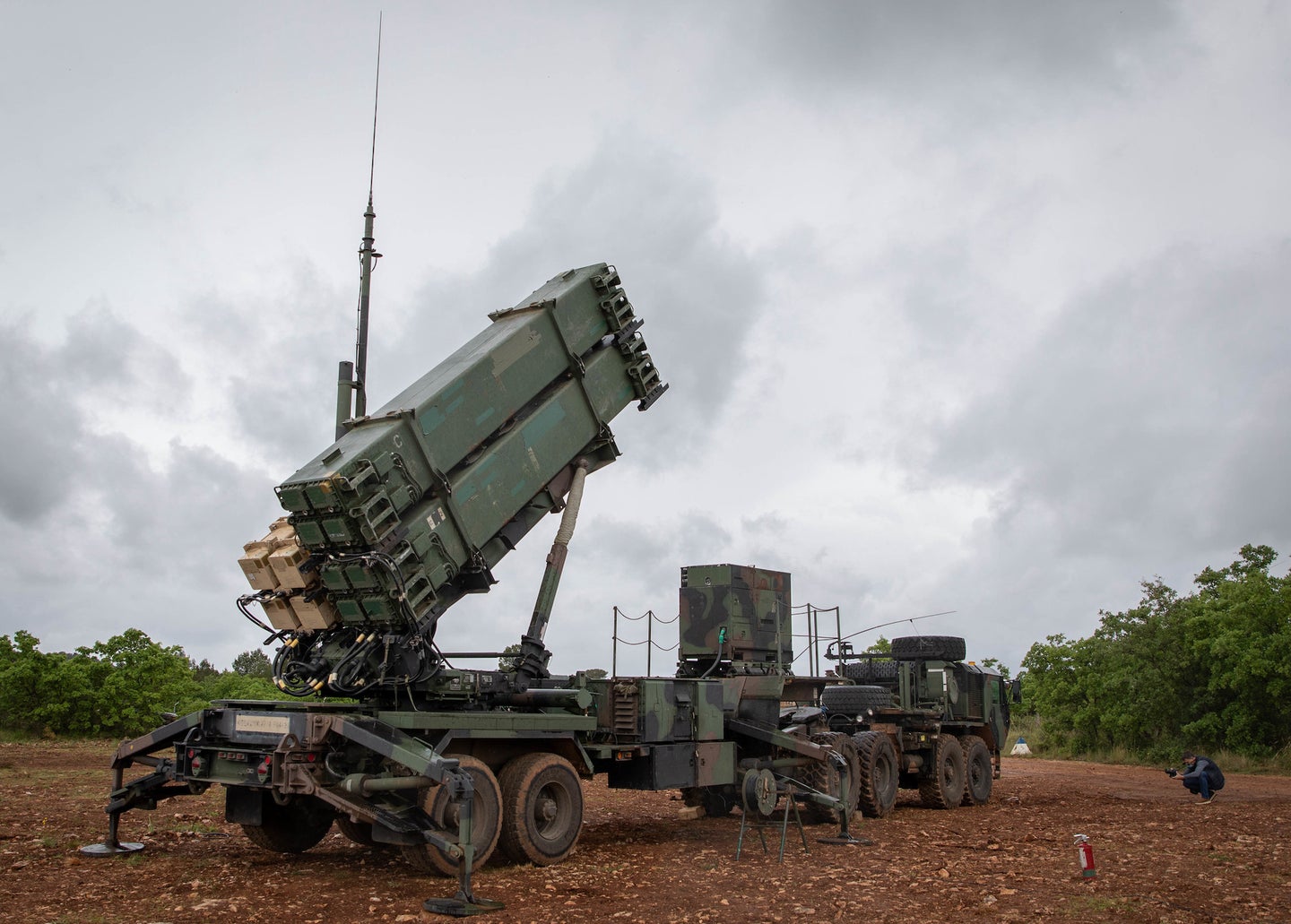
On December 21, Ukraine President Volodymyr Zelensky spoke before the United States Congress, on his first trip out of his country since Russia’s February 2022 invasion. Speaking against tyranny and drawing a direct analogy to American successes in the Revolutionary War’s Battle of Saratoga and World War II’s Battle of the Bulge, Zelensky promised to see Ukraine through to victory. He also asked for weapons. He asked for artillery, tanks, and planes, and he asked for one weapon specifically by name: Patriot missiles.
“If your Patriots stop the Russian terror against our cities, it will let Ukrainian patriots work to the full to defend our freedom,” said Zelensky. “When Russia cannot reach our cities by its artillery, it tries to destroy them with missile attacks.”
On the same day, the Department of Defense announced it was sending Ukraine its first Patriot air defense battery, along with missiles for it.
Missile defense
There are, broadly, two ways that militaries can use long-range explosives in war. The first is specific attacks, trying to find military bases or ammunition depots, fixed targets with clear impact on the ability to fight a war. Another is to use bombardment as a weapon of punishment, to inflict pain generally on a population, hoping that the destruction and demoralization hastens victory. Cruise missiles, which can be quite precise weapons, can serve the latter function when fired in barrages at targets far away.
Stopping cruise missiles is hard, in part because of their long range and ability to change direction in flight. Missile defense, which are systems that pair sensors like radar with interceptors like missiles, is one way to stop some of the attacks. Missile defense is a hard problem, even when only talking about missiles with conventional (non-nuclear) warheads, but it’s also a technology that has been developed for decades.
In November, the Department of Defense announced it was joining Spain in supplying Ukraine with HAWK missile interceptors. These weapons were first developed in the 1950s, deployed in the 1960, and upgraded versions still in use by many nations today. HAWKs are useful against aircraft, and they destroyed planes and helicopters when fired by Kuwaiti forces against Iraq in 1990.
Patriot missiles
While the United States retained HAWKs in its inventory and other nations deployed them, Patriot missiles have been the standard of interception for a long time. A Patriot missile battery consists of launchers, missiles, a command room to control firing, and a radar to identify and track targets. Once a target, like a plane or a missile, is detected for intercept, the operators fire in response, and then the Patriot missile flies to intercept, its own sensors guiding it along the course. Early Patriot missiles would intercept targets by exploding near them. Modern Patriot missiles destroy their targets in a physical collision.
Patriot missiles also had a major debut in the 1991 Gulf War against Scuds, a ballistic missile fired by Iraq, though that debut should come with caveats.
“During the 1991 Gulf War, the public was led to believe the [sic] that the Patriot had near-perfect performance, intercepting 45 of 47 Scud missiles,” wrote Jeffrey Lewis of Middlebury Institute of International Studies in 2019. “The U.S. Army later revised that estimate down to about 50 percent — and even then, it expressed ‘higher’ confidence in only about one-quarter of the cases. A pesky Congressional Research Service employee noted that if the Army had correctly applied its own assessment methodology consistently, the number would be far lower. (Reportedly that number was one — as in one lousy Scud missile downed.)”
Patriot missiles have improved considerably since then. During the 2003 invasion of Iraq, Patriot missiles were much more effective at intercepting ballistic missiles than they were in 1991, though there were still limits to their performance. The missiles have seen extensive use by Saudi Arabia and the United Arab Emirates, intercepting missiles, rockets, and drones fired into the countries by forces in Yemen as part of that ongoing war. Israel has also used Patriot missiles to shoot down a Syrian fighter-bomber.
Part of the challenge of using Patriot missiles is that they are made to destroy big threats, like bombers and ballistic missiles, while also being used to destroy smaller targets, like drones. In his speech before Congress, Zelensky said “Iranian deadly drones sent to Russia in hundreds — in hundreds became a threat to our critical infrastructure.”
These drones, most especially the self-detonating Shahed-136s, are used like cruise missiles to barrage a target from afar, but built from much cheaper parts.
“The high cost per missile and the relatively small number of missiles in a battery means that Patriot operators cannot shoot at every target,” wrote Mark Cancian and Tom Karako of CSIS, a think tank, earlier this month. “High-value Russian aircraft and ballistic missiles would be appropriate targets. Shooting $4 million missiles at $250,000 Russian cruise missiles might be justified if those missiles would hit sensitive targets. Shooting a $4 million missile at a $50,000 Iranian Shahed-136 drone would probably not.”
So long as Russia launches or threatens to launch cruise missiles into Ukraine, Patriot missiles can have a role in stopping the severity of the attack. To comprehensively deal with threats to the country, Ukraine can incorporate the Patriots into a holistic and layered defense, with everything from retaliatory rocket strikes to “threat emitters” that confuse sensors.
When it comes to stopping attacks, Ukraine may need not to use just Patriots, but Vampires—which are truck-mounted drone interceptors—too.
The post The Patriot missiles going to Ukraine have a long wartime history appeared first on Popular Science.
Articles may contain affiliate links which enable us to share in the revenue of any purchases made.
from Popular Science https://ift.tt/cu5emrx




0 Comments